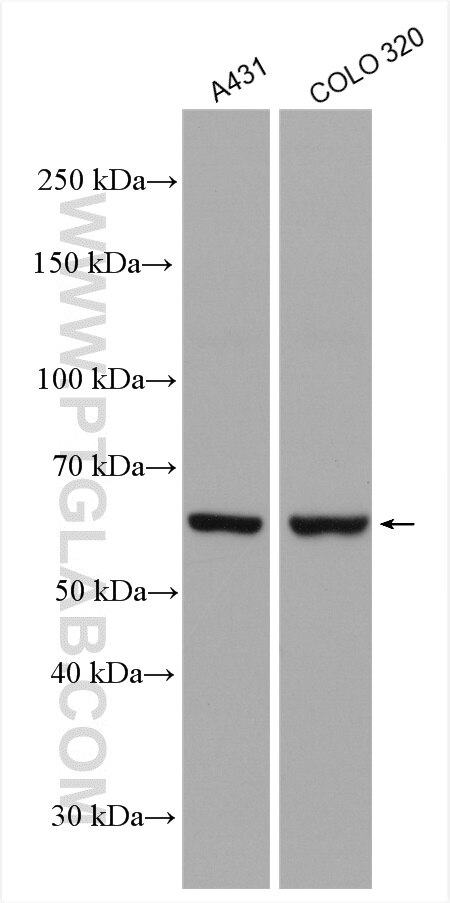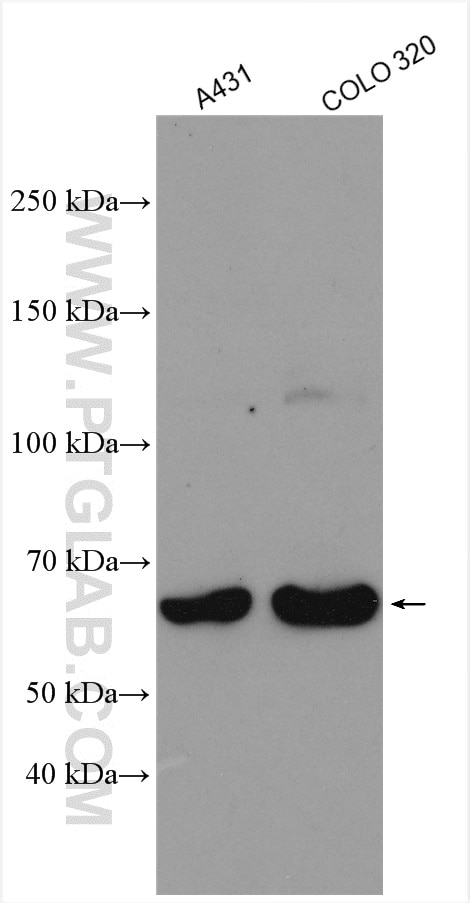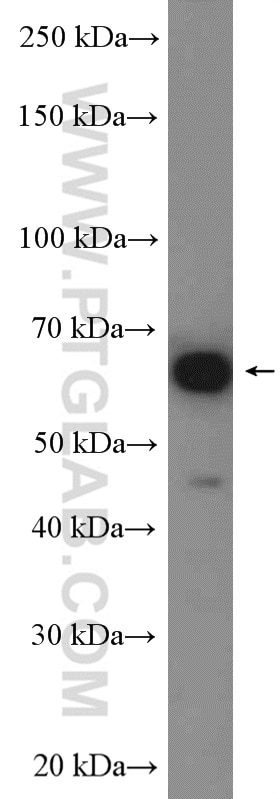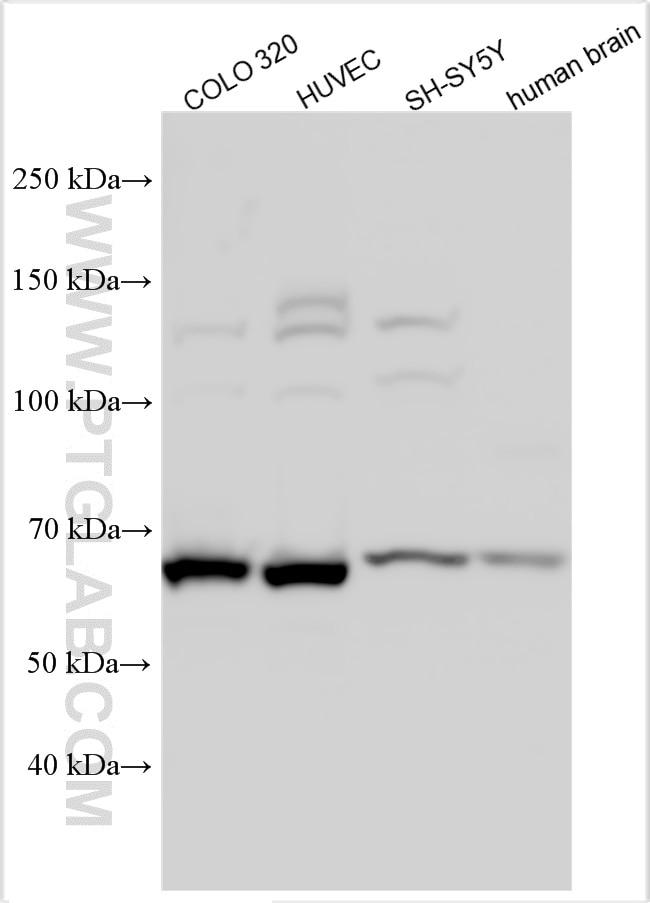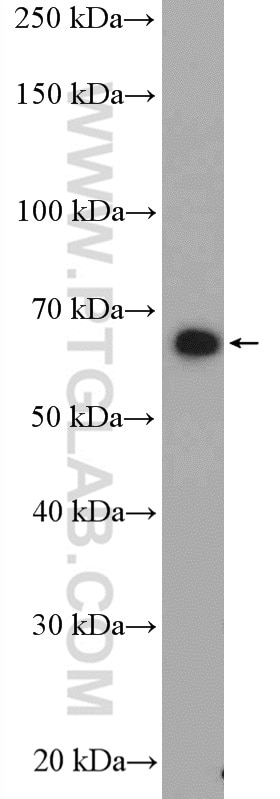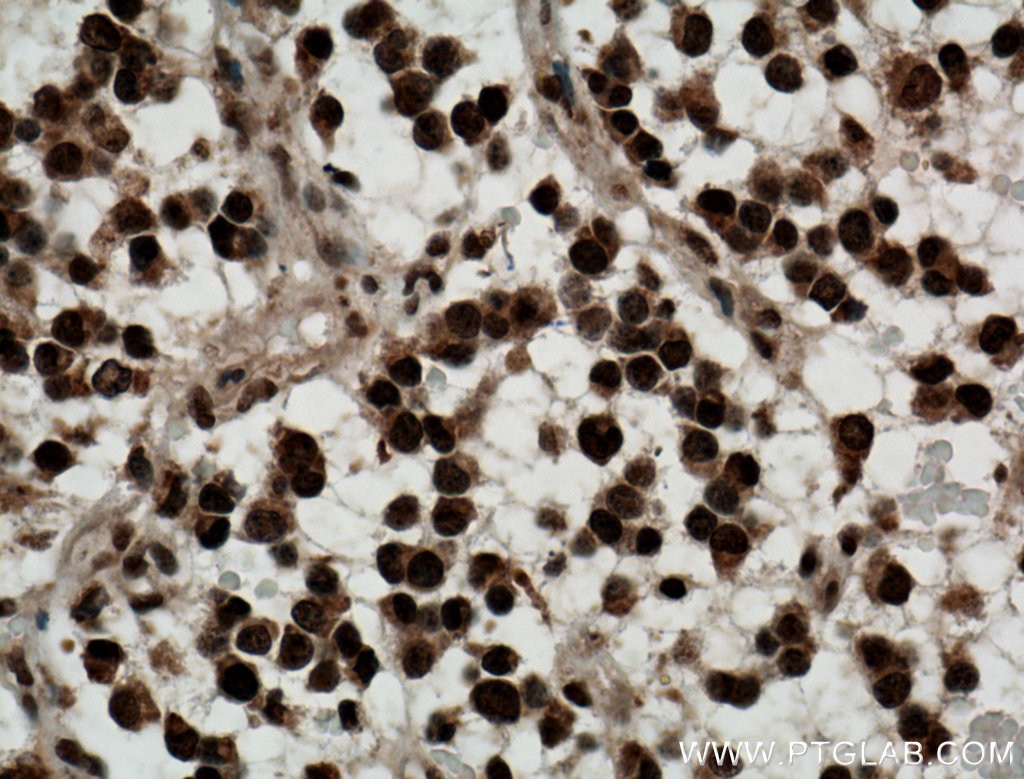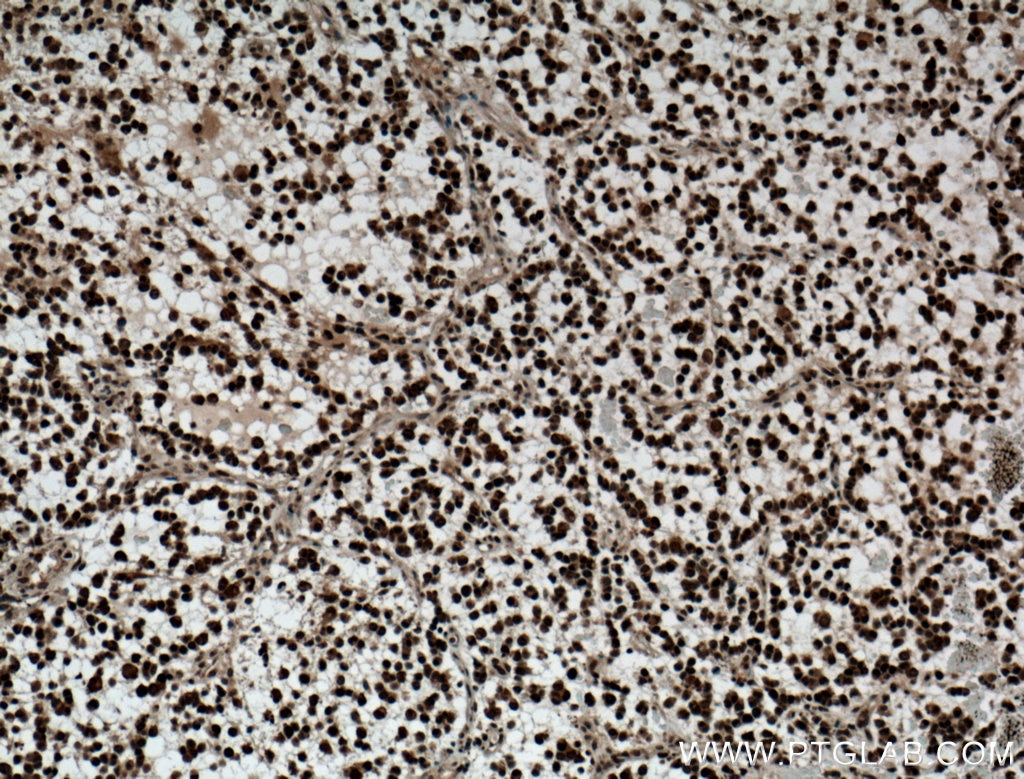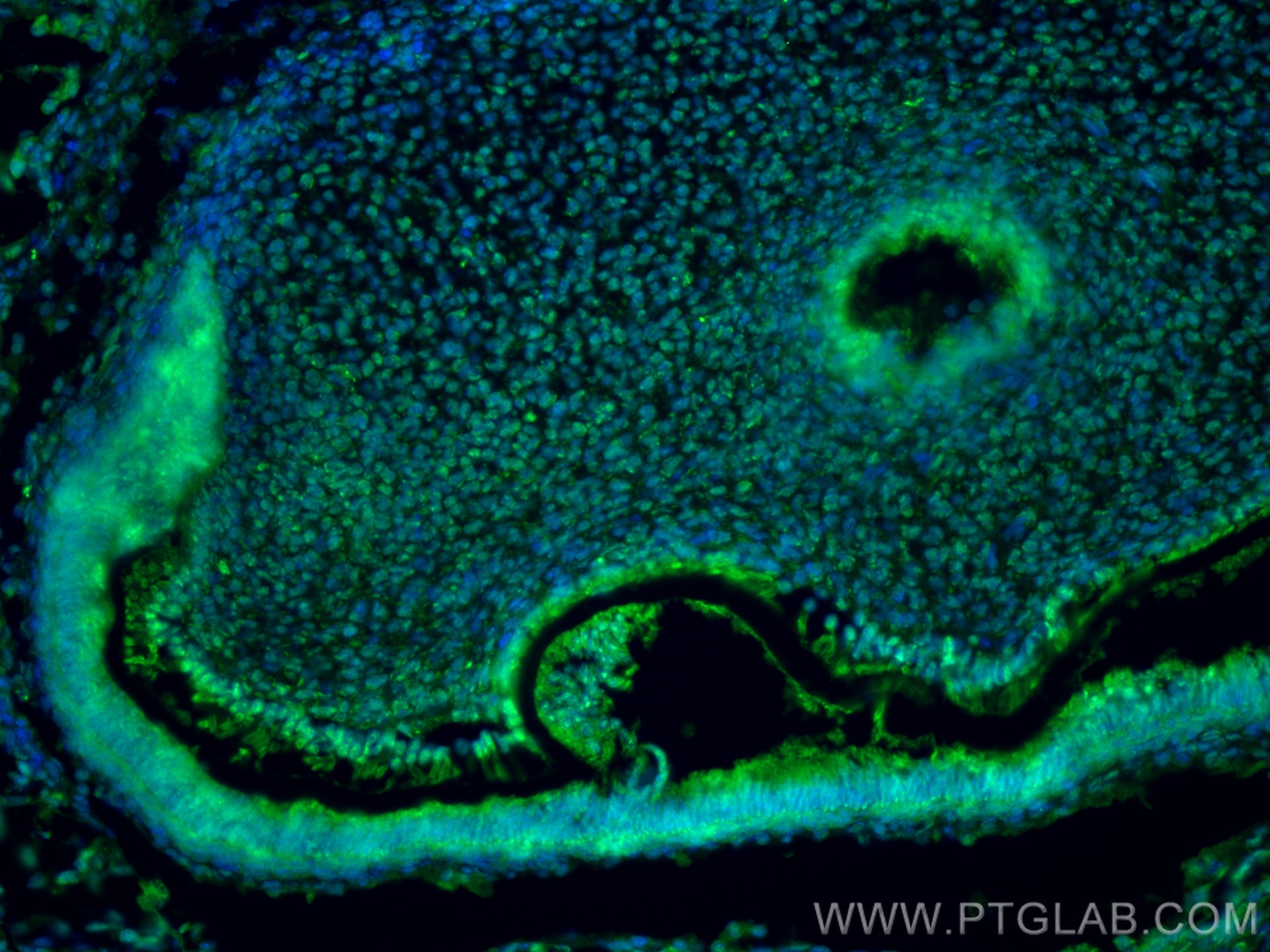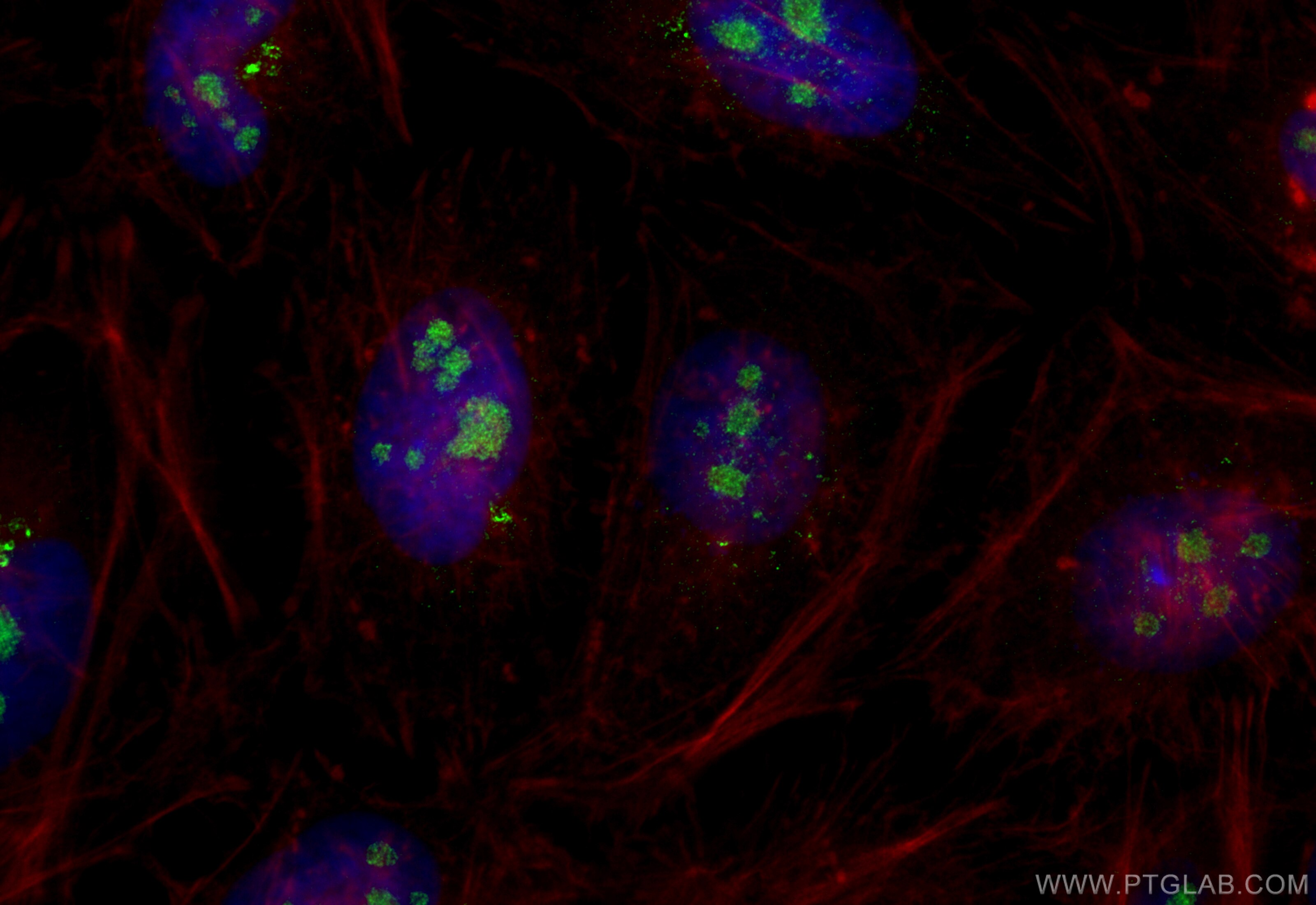Anticorps Polyclonal de lapin anti-Nurr1/NR4A2
Nurr1/NR4A2 Polyclonal Antibody for WB, IHC, IF/ICC, IF-P, ELISA
Hôte / Isotype
Lapin / IgG
Réactivité testée
Humain et plus (3)
Applications
WB, IHC, IF/ICC, IF-P, ChIP, ELISA
Conjugaison
Non conjugué
N° de cat : 10975-2-AP
Synonymes
Galerie de données de validation
Applications testées
| Résultats positifs en WB | cellules COLO 320, cellules A431, cellules HUVEC, cellules SH-SY5Y, tissu cérébral humain fœtal |
| Résultats positifs en IHC | tissu de gliome humain, il est suggéré de démasquer l'antigène avec un tampon de TE buffer pH 9.0; (*) À défaut, 'le démasquage de l'antigène peut être 'effectué avec un tampon citrate pH 6,0. |
| Résultats positifs en IF-P | Customer Sample customer, |
| Résultats positifs en IF/ICC | cellules HeLa, |
Dilution recommandée
| Application | Dilution |
|---|---|
| Western Blot (WB) | WB : 1:1000-1:4000 |
| Immunohistochimie (IHC) | IHC : 1:50-1:500 |
| Immunofluorescence (IF)-P | IF-P : 1:200-1:800 |
| Immunofluorescence (IF)/ICC | IF/ICC : 1:500-1:2000 |
| It is recommended that this reagent should be titrated in each testing system to obtain optimal results. | |
| Sample-dependent, check data in validation data gallery | |
Applications publiées
| WB | See 19 publications below |
| IHC | See 3 publications below |
| IF | See 11 publications below |
| ChIP | See 1 publications below |
Informations sur le produit
10975-2-AP cible Nurr1/NR4A2 dans les applications de WB, IHC, IF/ICC, IF-P, ChIP, ELISA et montre une réactivité avec des échantillons Humain
| Réactivité | Humain |
| Réactivité citée | rat, Humain, singe, souris |
| Hôte / Isotype | Lapin / IgG |
| Clonalité | Polyclonal |
| Type | Anticorps |
| Immunogène | Nurr1/NR4A2 Protéine recombinante Ag1418 |
| Nom complet | nuclear receptor subfamily 4, group A, member 2 |
| Masse moléculaire calculée | 66 kDa |
| Poids moléculaire observé | 66 kDa |
| Numéro d’acquisition GenBank | BC009288 |
| Symbole du gène | Nurr1 |
| Identification du gène (NCBI) | 4929 |
| Conjugaison | Non conjugué |
| Forme | Liquide |
| Méthode de purification | Purification par affinité contre l'antigène |
| Tampon de stockage | PBS with 0.02% sodium azide and 50% glycerol |
| Conditions de stockage | Stocker à -20°C. Stable pendant un an après l'expédition. L'aliquotage n'est pas nécessaire pour le stockage à -20oC Les 20ul contiennent 0,1% de BSA. |
Informations générales
NR4A2 belongs to the orphan nuclear receptor (NR) family referred to as NR4A family, which have been implicated in cell cycle regulation, apoptosis, inflammation, metabolism and more recently in carcinogenesis [PMID:22583411]. NR4A2 also has a role in the expression of several proteins that are necessary for the synthesis and regulation of DA, such as tyrosine hidroxilase, DA transporter, vesicular monoamine transporter 2, and cRET [PMID:22294735]. Act as a transcriptional regulator, NR4A2 is essential for the differentiation and maintenance of meso-diencephalic dopaminergic (mdDA) neurons during development. It is crucial for expression of a set of genes such as SLC6A3, SLC18A2, TH and DRD2 which are essential for development of mdDA neurons [PMID: 17184956].
Protocole
| Product Specific Protocols | |
|---|---|
| WB protocol for Nurr1/NR4A2 antibody 10975-2-AP | Download protocol |
| IHC protocol for Nurr1/NR4A2 antibody 10975-2-AP | Download protocol |
| IF protocol for Nurr1/NR4A2 antibody 10975-2-AP | Download protocol |
| Standard Protocols | |
|---|---|
| Click here to view our Standard Protocols |
Publications
| Species | Application | Title |
|---|---|---|
Cancer Identification of low intratumoral gene expression heterogeneity in neuroblastic tumors by genome-wide expression analysis and game theory. | ||
Cells Hair-Follicle-Associated Pluripotent (HAP) Stem Cells Can Extensively Differentiate to Tyrosine-Hydroxylase-Expressing Dopamine-Secreting Neurons. | ||
Cell Signal miR-206 modulates lipopolysaccharide-mediated inflammatory cytokine production in human astrocytes. | ||
Int J Biochem Cell Biol Caveolin-1 facilitates cell migration by upregulating nuclear receptor 4A2/retinoid X receptor α-mediated β-galactoside α2,6-sialyltransferase I expression in human hepatocarcinoma cells. | ||
Brain Sci Itaconate Attenuates Neuroinflammation and Exerts Dopamine Neuroprotection in Parkinson's Disease through Inhibiting NLRP3 Inflammasome | ||
Exp Ther Med Attenuated macrophage activation mediated by microRNA-183 knockdown through targeting NR4A2. |
Avis
The reviews below have been submitted by verified Proteintech customers who received an incentive for providing their feedback.
FH Ankush (Verified Customer) (05-28-2025) | Worked fine Staining: Red: Nurr1/NR4A2 Green: Beta Tubulin III Blue: DAPI
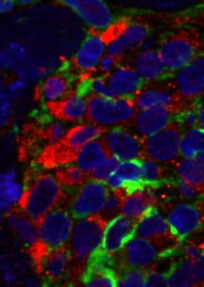 |
